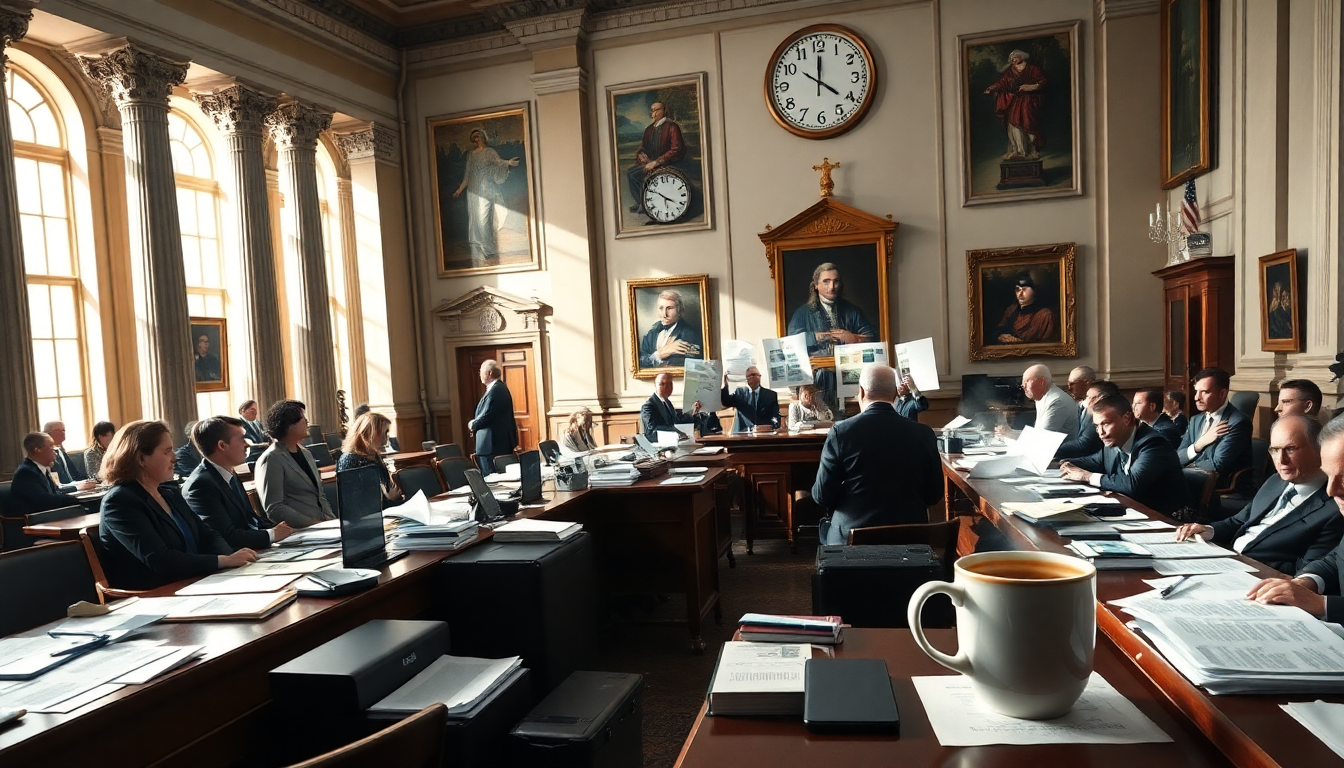Table of Contents
The legislative process in Congress can often feel like navigating a maze, filled with intricate procedures and strategic moves. As lawmakers push to pass significant bills, the journey can take much longer than anyone expects. This sometimes leaves both casual observers and those involved scratching their heads at the drawn-out timelines and procedural hurdles. Take, for instance, the recent passage of a major piece of legislation, frequently dubbed the “big, beautiful bill.” It offers a glimpse into the complexities of how Congress operates and the various factors that slow things down.
Navigating the Legislative Landscape
Understanding the legislative landscape is key when exploring how bills make their way through Congress. Lawmakers often kick off with ambitious plans, only to hit a series of delays that can dramatically shift their timelines. For example, the House of Representatives managed to adopt a formal version of the “big, beautiful bill” sooner than anticipated. However, the ensuing discussions in the Senate revealed just how complicated legislative negotiations can be.
The path from an idea to a signed bill is filled with discussions, revisions, and negotiations among lawmakers, aides, and stakeholders. Various factors—like political dynamics, public sentiment, and the very nature of the legislative process—can significantly influence the timeline. For instance, when the Senate first aimed to tackle the House’s version of the bill, unexpected delays pushed everything back, showcasing the unpredictable essence of congressional proceedings.
Moreover, the procedural rules that govern the Senate and the House can add layers of complexity. From needing unanimous consent to kick off debates to requiring a simple majority for advancements, every single step must be carefully navigated. Lawmakers often find themselves racing against the clock, where every second matters and stakes are high. Just like in sports, managing time becomes crucial in the legislative arena.
Key Moments and Challenges
The recent history surrounding the “big, beautiful bill” is packed with key moments that highlight the hurdles Congress faces. A notable instance was the procedural vote needed to kick off debate. Originally set for midweek, this vote faced delays as lawmakers scrambled to finalize the bill’s details. The hesitance of several senators to move forward with an incomplete bill underscored just how important thoroughness is in the legislative process.
As the Senate gathered for a weekend session, excitement around the procedural vote reached a fever pitch. However, the actual vote took longer than anyone expected, stretching late into the night. This scenario perfectly illustrates the unpredictable nature of Congress, where even straightforward procedural votes can become lengthy affairs.
Additionally, the subsequent reading of the bill by Senate clerks—a rare and time-consuming event—further highlighted the complexities involved. The clerks took nearly an entire day to read a 940-page document out loud, adding even more time to an already extended timeline. Such scenarios emphasize the meticulous nature of legislative proceedings, where every detail is examined and transparency is a priority.
Concluding Thoughts on Congressional Dynamics
As the legislative process continues to unfold, it becomes clear that time is both a precious resource and a significant challenge for lawmakers. Lengthy debates, procedural hurdles, and strategic negotiations all contribute to the complexity of passing significant legislation. The recent passage of the “big, beautiful bill” serves as a real-world case study in the intricate dynamics of Congress, showcasing the need for patience, strategy, and adaptability in navigating this complex landscape.
Looking ahead, grasping the mechanisms behind congressional decision-making will be crucial for anyone engaged in political discussions and advocacy. By breaking down the legislative process and identifying the factors that shape it, stakeholders can better prepare for the challenges that lie ahead in the ever-changing world of American politics. So, how do you think understanding this process could empower young voices in shaping future legislation?


